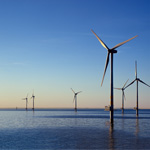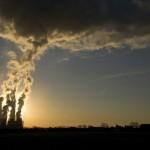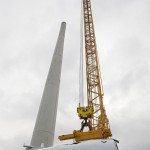
Piet Willem Chevalier
“If I had to sum it up in one word, I would say identity,” says Piet Willem Chevalier, owner and operator of I Love Windpower. “On my first trip to Mali, I saw this group of people that were really shy, that didn’t want to ask questions, they had no confidence. After we made that first turbine, we threw a party and it was quite amazing to see how this sense of identity grew.”
One day while driving in the Netherlands Piet became transfixed by a set of wind turbines and literally drove off the road,. He couldn’t have known at that time that this incident would change his life. In a few years he would be bringing wind power to Mali where the poorest communities often pay the highest rates for energy.
One thing led to another and Piet started working as an engineer for Siemens wind. After about a year Piet discovered the work of Welsh engineer, Hugh Piggott. Mr. Piggott is the inventor of an open source, affordable, small-scale wind turbine design. Piet invited Hugh to come and teach a workshop in the Netherlands. It took some convincing, but Mr. Piggott finally agreed.
continue reading »
 An overwhelming majority of the public in the UK approve of the government providing financial support for renewable energy technologies, according to a new survey. The YouGov poll for the Sunday Times found support from across the political spectrum, with Conservative, Labour, Lib Dem and UKIP voters all agreeing that the government should continue investing in low-carbon technologies.
An overwhelming majority of the public in the UK approve of the government providing financial support for renewable energy technologies, according to a new survey. The YouGov poll for the Sunday Times found support from across the political spectrum, with Conservative, Labour, Lib Dem and UKIP voters all agreeing that the government should continue investing in low-carbon technologies.
The survey found 65% of respondents in favour of government spending money for wind power, while 76% said the same for tidal energy and 78% backed financial support for solar. In comparison, only 49% approved of public financial support for nuclear, 57% for clean coal and just 40% said the government should provide support for shale gas. 47% of respondents considered shale gas projects as damaging to the environment.
Despite this, Chancellor George Osborne recently revealed tax breaks for the fracking industry, with a 30% tax rate for onshore shale gas production, much lower than oil taxes. Osborne called his new tax regime “the most generous for shale in the world”.
continue reading »
 After a meeting last week in Luxembourg, the board of the European Investment Bank (EIB) changed its energy lending policy. The EU’s main lending arm said it would stop financing most coal-fired power stations to help reduce pollution and meet climate targets, and devote 90% of its lending to clean energy.
After a meeting last week in Luxembourg, the board of the European Investment Bank (EIB) changed its energy lending policy. The EU’s main lending arm said it would stop financing most coal-fired power stations to help reduce pollution and meet climate targets, and devote 90% of its lending to clean energy.
In a press release, the EIB says it ‘will focus on financing energy efficiency, renewable energy, energy networks, as well as related research and innovation. These sectors are expected to require the most significant investment in coming years’.
According to the Guardian the EIB has loaned around €11bn ($14.5bn) to fossil fuel-fired plants since 2007, most of it to gas rather than coal, out of its total lending for power of €83bn.
continue reading »
 Greenhouse gases produced over the lifetime of a wind turbine – including for its manufacturing and installation – are less than that of fossil-fuel based energy sources and most other renewables, a new study from the US shows. Only ocean energy (wave and tidal) and hydropower have lower emissions than wind.
Greenhouse gases produced over the lifetime of a wind turbine – including for its manufacturing and installation – are less than that of fossil-fuel based energy sources and most other renewables, a new study from the US shows. Only ocean energy (wave and tidal) and hydropower have lower emissions than wind.
As a clean, fuel-free source of energy, wind turbines obviously create energy without generating the damaging pollutants that result from burning coal, gas and other fossil fuels. But a charge often leveled by anti-wind energy groups is that the manufacture and erection of wind turbines creates emissions on a scale that belies the idea that wind power is clean.
The Life Cycle Assessment (LCA) study by the National Renewable Energy Laboratory shows that wind energy‘s lifecycle greenhouse gas emissions are a small percentage of those of fossil fuels, lower than nuclear, and even lower than nearly all other renewable energy resources. From cradle to grave, coal-fired electricity releases about 20 times more greenhouse gases per kilowatt-hour than wind or solar, for example (based on median estimates for each technology). See the study for further details.
continue reading »
 On 1 July Croatia became the 28th member of the EU. The country has started investing in wind power – indeed it is the leader of the western Balkan region, with 193.75 MW of wind turbines in operation at the end of 2012. However a new report underlines that international financial institutions must offer more support for renewables rather than fossil fuels if Croatia and its Balkan neighbours are ever to catch up with the renewable energy capacity of other EU states.
On 1 July Croatia became the 28th member of the EU. The country has started investing in wind power – indeed it is the leader of the western Balkan region, with 193.75 MW of wind turbines in operation at the end of 2012. However a new report underlines that international financial institutions must offer more support for renewables rather than fossil fuels if Croatia and its Balkan neighbours are ever to catch up with the renewable energy capacity of other EU states.
According to the report, Invest in Haste, Repent at leisure, published by civil society organisations CEE Bankwatch Network, SEE Change Net and WWF, Europe’s development banks are spending 32 times more on fossil fuels than on non-hydropower renewable energy sources in the western Balkan region. This trend means that the western Balkan countries are heading in the opposite direction of the EU goals on climate change for the years 2020, 2030 and 2050, says the report.
continue reading »











